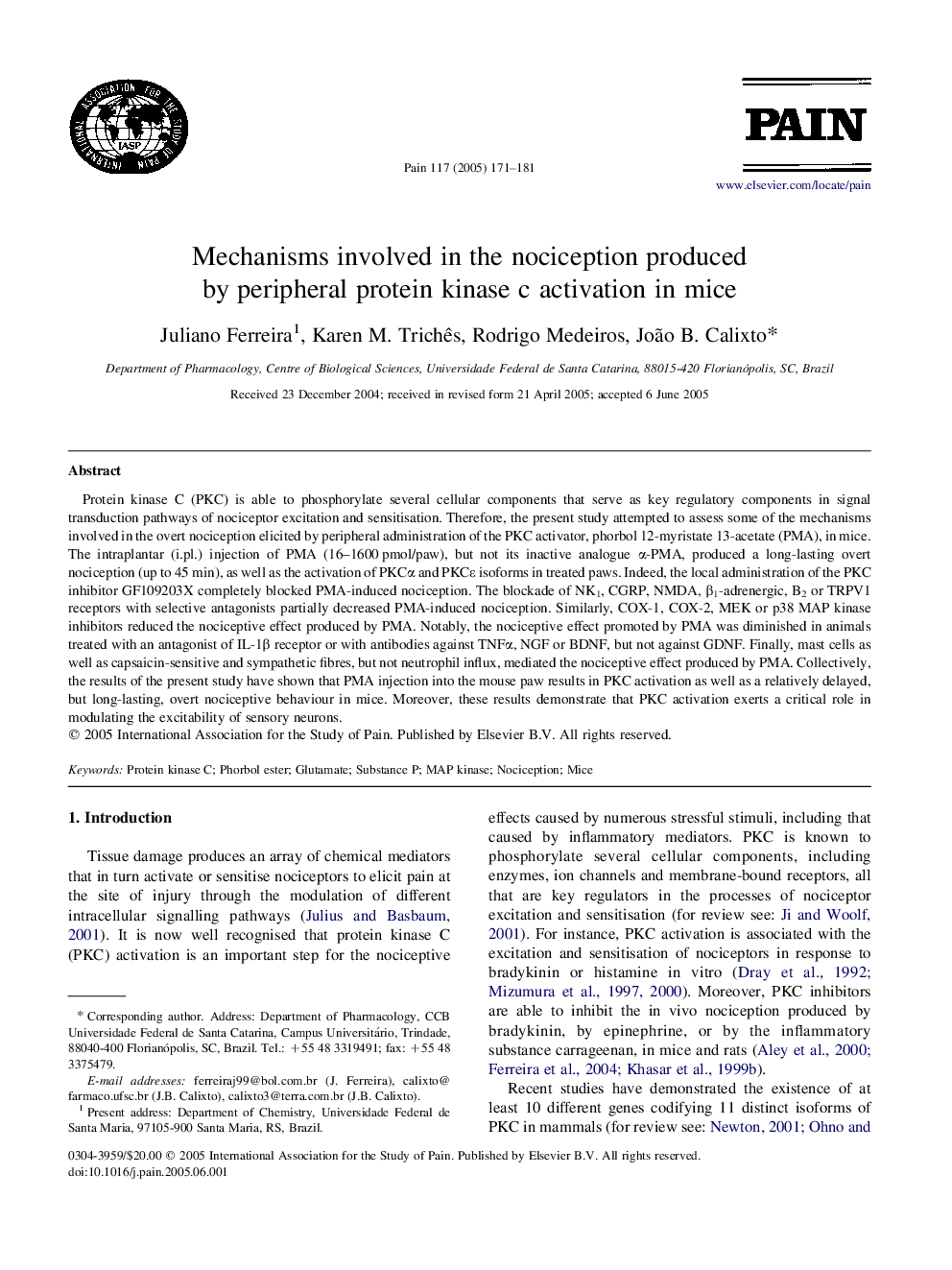| کد مقاله | کد نشریه | سال انتشار | مقاله انگلیسی | نسخه تمام متن |
|---|---|---|---|---|
| 9720987 | 1473268 | 2005 | 11 صفحه PDF | دانلود رایگان |
عنوان انگلیسی مقاله ISI
Mechanisms involved in the nociception produced by peripheral protein kinase c activation in mice
دانلود مقاله + سفارش ترجمه
دانلود مقاله ISI انگلیسی
رایگان برای ایرانیان
کلمات کلیدی
موضوعات مرتبط
علوم زیستی و بیوفناوری
علم عصب شناسی
علوم اعصاب سلولی و مولکولی
پیش نمایش صفحه اول مقاله

چکیده انگلیسی
Protein kinase C (PKC) is able to phosphorylate several cellular components that serve as key regulatory components in signal transduction pathways of nociceptor excitation and sensitisation. Therefore, the present study attempted to assess some of the mechanisms involved in the overt nociception elicited by peripheral administration of the PKC activator, phorbol 12-myristate 13-acetate (PMA), in mice. The intraplantar (i.pl.) injection of PMA (16-1600 pmol/paw), but not its inactive analogue α-PMA, produced a long-lasting overt nociception (up to 45 min), as well as the activation of PKCα and PKCε isoforms in treated paws. Indeed, the local administration of the PKC inhibitor GF109203X completely blocked PMA-induced nociception. The blockade of NK1, CGRP, NMDA, β1-adrenergic, B2 or TRPV1 receptors with selective antagonists partially decreased PMA-induced nociception. Similarly, COX-1, COX-2, MEK or p38 MAP kinase inhibitors reduced the nociceptive effect produced by PMA. Notably, the nociceptive effect promoted by PMA was diminished in animals treated with an antagonist of IL-1β receptor or with antibodies against TNFα, NGF or BDNF, but not against GDNF. Finally, mast cells as well as capsaicin-sensitive and sympathetic fibres, but not neutrophil influx, mediated the nociceptive effect produced by PMA. Collectively, the results of the present study have shown that PMA injection into the mouse paw results in PKC activation as well as a relatively delayed, but long-lasting, overt nociceptive behaviour in mice. Moreover, these results demonstrate that PKC activation exerts a critical role in modulating the excitability of sensory neurons.
ناشر
Database: Elsevier - ScienceDirect (ساینس دایرکت)
Journal: Pain - Volume 117, Issues 1â2, September 2005, Pages 171-181
Journal: Pain - Volume 117, Issues 1â2, September 2005, Pages 171-181
نویسندگان
Juliano Ferreira, Karen M. Trichês, Rodrigo Medeiros, João B. Calixto,